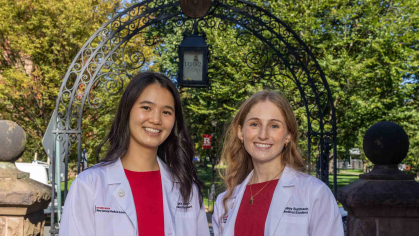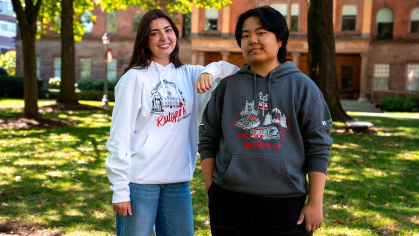Doctoral Student Earns Prestigious Rome Prize
Julia Katz is one of 31 artists and scholars awarded the chance to live and work in Italy’s capital
Julia Katz has always been fascinated by stories of the ancient worlds. When she was 8 or 9, at her grandfather’s recommendation, she read the works of Homer.
“Part of it may be the fantasy element and the creativity required to come up with these stories,” said Katz, who is pursuing her doctorate in art history at Rutgers. “I’ve always been smitten with Greek and Roman mythology and that’s what I continue to return to in my own research.”

Soon, Katz will be able to conduct her research in the place where some of these stories were first told centuries ago.
She is one of 31 artists and scholars awarded this year’s Rome Prize from the American Academy in Rome, which provides room and board at a residential center on an 11-acre campus on Janiculum Hill in Italy’s capital. Each of the fellows receives a stipend and workspace to fully immerse themselves in their work.
“The Rome Prize is one of the most storied fellowship programs in the United States,” Peter N. Miller, the academy’s president, said in the press release announcing the 2024-2025 class. “Over a thousand people compete for the chance to live and work in Rome, inspired by the city and one another. The Rome Prize winners represent a bridge between the United States and Italy, but also between a present of potential and a future of achievement.”
The academy awards its prizes in 11 disciplines, including Katz’s category in Renaissance and early modern studies. Her research is titled Circe’s Wand: Reimagining Antiquities in Early Modern Europe, 1500-1800. In Greek mythology, Circe was a sorceress who was able to turn humans into wolves, lions and swine.
“I’m looking at the practice of sculpture restoration as more than just adding a missing nose or reattaching a broken arm to a torso,” said Katz, who, at 30, is among the youngest of this year’s prize recipients. “I’m exploring the practice as the inventive re-creation of the absent parts of ancient remains.”
She is researching the restored pieces (the physical process) as well as how these restorationists thought the pieces could have looked originally (the imagined process).
“I’m looking at the way that artists, specifically in 17th century – but I’m covering a broad span of time from 1500-1800 – recycle these ancient fragments in an imagined and real sense,” she said.

She will spend nearly a year – from September through July 2025 – poring through the academy’s rare book collections, which she said are just a couple floors beneath her bedroom. She also will visit museums, like the Borghese Gallery, and libraries, including the Vatican’s.
The Rome Prize – described by the academy as “the gift of time and space to think and work” – was especially competitive this year, with a record high 1,106 applications, resulting in under 3 percent acceptance rate.
Katz’s research will serve as her dissertation as she plans to complete her degree in spring 2026. But more importantly for her are the conversations over meals she’ll have and the relationships she hopes to develop with other artists in varied disciplines. The other Rome Prize fellowships include research in design, architecture, literature, visual arts and musical composition.
“I think the larger impact of the fellowship on my life will be making connections and developing new ways of thinking beyond just in an art-historical mode, the way I’ve been trained. That’s important to me: seeing things in new ways. I’m especially excited to get to know the other people with whom I’ll be living and seeing how their work inspires me, and hopefully, vice versa.”


